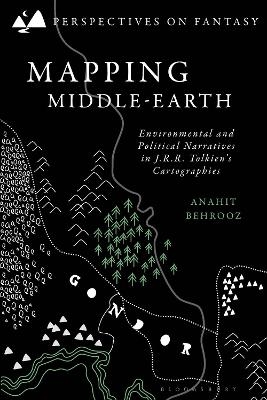
Mapping Middle-earth
Bloomsbury Academic (Verlag)
978-1-350-29080-8 (ISBN)
Far more than just illustrations to aid understanding of the story, Tolkien’s corpus of maps are crucial to understanding the broader narratives between humans and their political and environmental landscapes within his legendarium. Undertaking a diegetic literary analysis of the maps as examples of Middle-earth’s own cultural output, Behrooz reveals a sub-created tradition of cartography that articulates specific power dynamics between mapmaker, map reader, and what is being mapped, as well as the human/nonhuman binary that represents human’s control over the natural world.
Mapping Middle-earth surveys how Tolkien frames cartography as an inherently political act that embodies a desire for control of that which it maps. In turn, it analyses harmful contemporary engagements with land that intersect with, but also move beyond, cartography such as environmental damage; human-induced geological change; and the natural and bodily costs of political violence and imperialism. Using historical, eco-critical, and postcolonial frameworks, and such theorists as Michel Foucault, Donna Haraway and Edward Said, this book explores Tolkien’s employment of particular generic tropes including medievalism, fantasy, and the interplay between image and text to highlight, and at times correct, his contemporary socio-political epoch and its destructive relationship with the wider world.
Anahit Behrooz is an independent research scholar and arts journalist. She received her PhD from the University of Edinburgh, UK, and has taught both at the University of Edinburgh and Edinburgh Napier University.
Introduction
- Space, power, and critical cartography
- Literary maps
- Structure and overview
Chapter 1: Political mapmaking
- Medieval cartographic practices
- Modern cartographic practices
- Tolkien’s cartography
Map I: I Vene Kemen
Map II: The ‘Ambarkanta’ diagrams and maps
Map III: Thror’s Map
Map IV: The Middle-earth map
Map V: Map of Rohan, Gondor and Mordor
Chapter 2: Environment
- Navigating the human, nonhuman, and posthuman
- Tom Bombadil and the nonhuman
- Mapping the human and nonhuman in Middle-earth
- Stewardship
- Environmental destruction
- Nonhuman agency
Chapter 3: Geology and Time
- Deep time
- Middle-earth’s geology
- Mapping geology and geologizing maps
- Fixing experiences of time
- Mapping anthropological change
Chapter 4: Imperialism and Race
- The politics of land and map
- (Dis)possessing Middle-earth’s lands
- The threshold space
- Mutual vulnerability and racialization
- Narratives of imperialism
Conclusion
Index
Bibliography
| Erscheinungsdatum | 10.02.2024 |
|---|---|
| Reihe/Serie | Perspectives on Fantasy |
| Verlagsort | London |
| Sprache | englisch |
| Maße | 156 x 234 mm |
| Themenwelt | Literatur ► Fantasy / Science Fiction ► Fantasy |
| Geisteswissenschaften ► Sprach- / Literaturwissenschaft ► Anglistik / Amerikanistik | |
| Geisteswissenschaften ► Sprach- / Literaturwissenschaft ► Literaturwissenschaft | |
| Naturwissenschaften ► Geowissenschaften ► Geografie / Kartografie | |
| ISBN-10 | 1-350-29080-7 / 1350290807 |
| ISBN-13 | 978-1-350-29080-8 / 9781350290808 |
| Zustand | Neuware |
| Haben Sie eine Frage zum Produkt? |
aus dem Bereich


